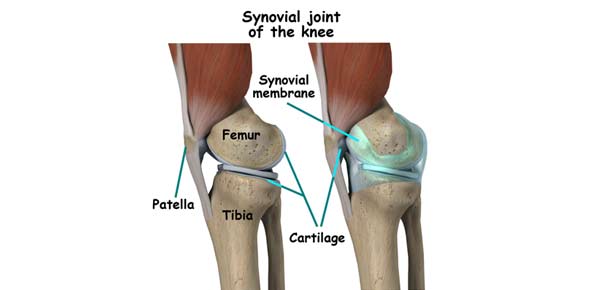Movements At Synovial Joints

- 1.
Movement describes a cone in space.
- A.
Flexion
- B.
Abduction
- C.
Extension
- D.
Circumduction
- E.
Dorsiflexion
Correct Answer
D. CircumductionExplanation
Circumduction is the correct answer because it refers to the movement of a body part in a circular motion, creating a cone-like shape in space. This movement involves a combination of flexion, extension, abduction, and adduction.Rate this question:
-
- 2.
Bending movement that decreases the angle of the joint
- A.
Circumduction
- B.
Extension
- C.
Flexion
- D.
Dorsiflextion
- E.
Abduction
Correct Answer
C. FlexionExplanation
Flexion is the correct answer because it refers to the bending movement that decreases the angle of the joint. This movement is commonly observed in joints like the elbow or knee, where the angle between the bones decreases as they come closer together. Flexion allows for a range of movements such as bending the arm or bringing the leg towards the body. Therefore, flexion accurately describes the given description of a bending movement that decreases the angle of the joint.Rate this question:
-
- 3.
One flat bone surface glides or slips over another similar surface
- A.
Adduction
- B.
Plantar flexion
- C.
Abduction
- D.
Extension
- E.
Gliding
Correct Answer
E. GlidingExplanation
Gliding refers to the movement where one flat bone surface slides or slips over another similar surface. This type of movement allows for smooth and controlled motion between the two surfaces. It is different from other movements listed in the options such as adduction, abduction, extension, and plantar flexion, which involve different types of joint actions.Rate this question:
-
- 4.
Reverse of flexion, joint angle is increased
- A.
Dorsiflexion
- B.
Gliding
- C.
Abduction
- D.
Extension
- E.
Adduction
Correct Answer
D. ExtensionExplanation
Extension refers to the movement of a joint that increases the angle between two bones or body parts. In this case, the question states that the reverse of flexion is being described, which means that the joint angle is being increased. Therefore, the correct answer is extension.Rate this question:
-
- 5.
Movement toward the midline
- A.
Flexion
- B.
Extension
- C.
Abduction
- D.
Adduction
- E.
Circumduction
Correct Answer
D. AdductionExplanation
Adduction refers to the movement of a body part toward the midline of the body. In this context, it means bringing a body part closer to the center of the body. Flexion refers to the bending of a joint, extension refers to the straightening of a joint, abduction refers to the movement of a body part away from the midline, and circumduction refers to the circular movement of a body part.Rate this question:
-
- 6.
The turning of a bone around its own long axis
- A.
Circumduction
- B.
Flexion
- C.
Rotation
- D.
Gliding
- E.
Plantar flexion
Correct Answer
C. RotationExplanation
Rotation refers to the turning of a bone around its own long axis. This movement allows for the bone to rotate or twist, changing its position without changing its location. It is different from other movements such as flexion, which involves bending a joint, or circumduction, which involves a circular movement of a limb. Rotation is an important movement in the human body, allowing for various actions such as turning the head, rotating the arm, or twisting the trunk.Rate this question:
-
- 7.
Movement away from the midline
- A.
Flexion
- B.
Extension
- C.
Adduction
- D.
Abduction
- E.
Rotation
Correct Answer
D. AbductionExplanation
Abduction refers to the movement of a body part away from the midline of the body. This can occur in various joints, such as the shoulder or hip joint. In contrast, flexion refers to the bending of a joint, extension refers to the straightening of a joint, adduction refers to the movement of a body part towards the midline, and rotation refers to the movement of a body part around its axis. Therefore, the correct answer is abduction, as it specifically describes the movement away from the midline.Rate this question:
-
- 8.
Up and down movement of the foot
- A.
Dorsiflexion and plantar flexion
- B.
Extension
- C.
Abduction
- D.
Adduction
- E.
Flexion
Correct Answer
A. Dorsiflexion and plantar flexionExplanation
Dorsiflexion and plantar flexion refer to the up and down movement of the foot. Dorsiflexion is the movement of the foot towards the shin, while plantar flexion is the movement of the foot away from the shin. These movements occur at the ankle joint and are important for activities such as walking and running.Rate this question:
-
Quiz Review Timeline +
Our quizzes are rigorously reviewed, monitored and continuously updated by our expert board to maintain accuracy, relevance, and timeliness.
-
Current Version
-
Mar 22, 2023Quiz Edited by
ProProfs Editorial Team -
Jun 29, 2010Quiz Created by
Meghan1129
- Aura Quizzes
- Axial Skeleton Quizzes
- Body Mechanics Quizzes
- Body Parts Quizzes
- Body System Quizzes
- Chest Quizzes
- Ear Quizzes
- Endocrine Quizzes
- Eye Quizzes
- Feet Quizzes
- Gland Quizzes
- Limb Quizzes
- Musculoskeletal Quizzes
- Pain Quizzes
- Pharmacodynamics Quizzes
- Piercing Quizzes
- Spanish Body Parts Quizzes
- Thorax Quizzes
- Urine Quizzes
 Back to top
Back to top


